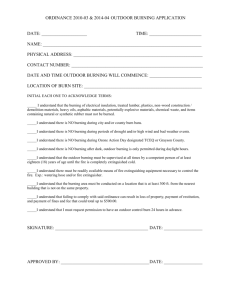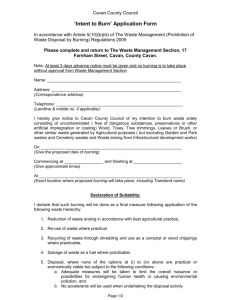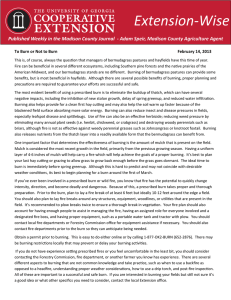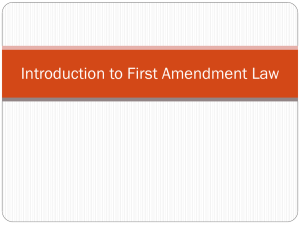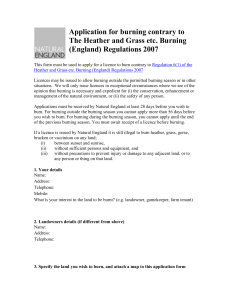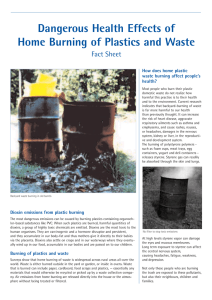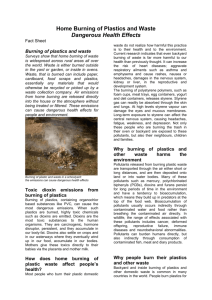Waste Disposal Information Sheet
advertisement
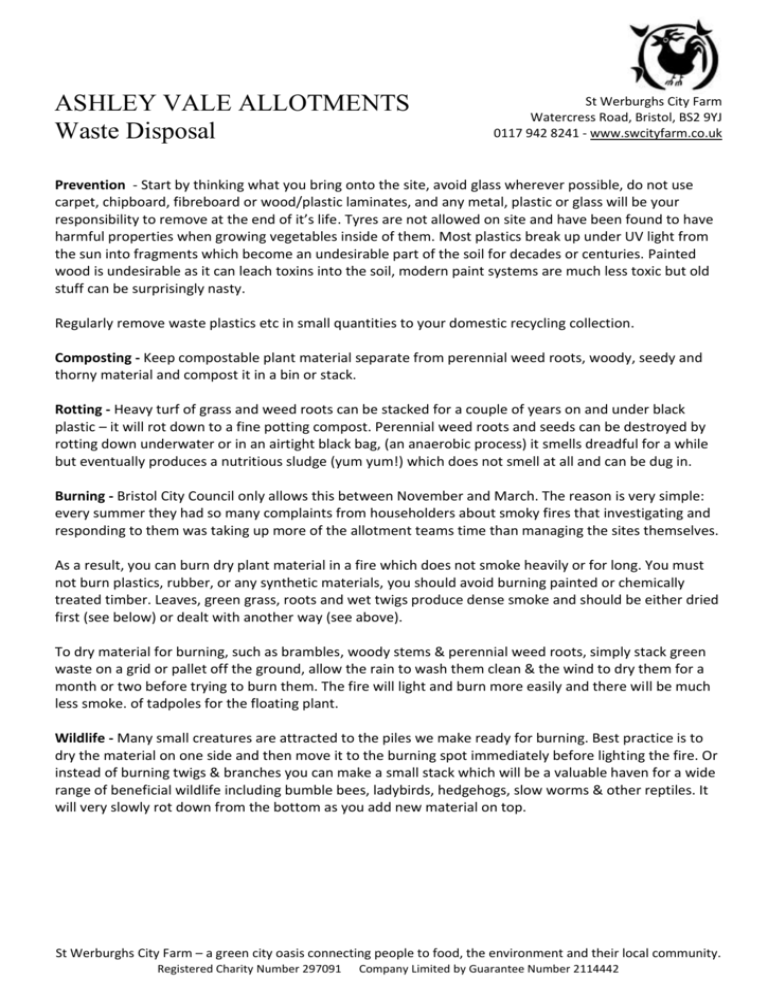
ASHLEY VALE ALLOTMENTS Waste Disposal St Werburghs City Farm Watercress Road, Bristol, BS2 9YJ 0117 942 8241 - www.swcityfarm.co.uk Prevention - Start by thinking what you bring onto the site, avoid glass wherever possible, do not use carpet, chipboard, fibreboard or wood/plastic laminates, and any metal, plastic or glass will be your responsibility to remove at the end of it’s life. Tyres are not allowed on site and have been found to have harmful properties when growing vegetables inside of them. Most plastics break up under UV light from the sun into fragments which become an undesirable part of the soil for decades or centuries. Painted wood is undesirable as it can leach toxins into the soil, modern paint systems are much less toxic but old stuff can be surprisingly nasty. Regularly remove waste plastics etc in small quantities to your domestic recycling collection. Composting - Keep compostable plant material separate from perennial weed roots, woody, seedy and thorny material and compost it in a bin or stack. Rotting - Heavy turf of grass and weed roots can be stacked for a couple of years on and under black plastic – it will rot down to a fine potting compost. Perennial weed roots and seeds can be destroyed by rotting down underwater or in an airtight black bag, (an anaerobic process) it smells dreadful for a while but eventually produces a nutritious sludge (yum yum!) which does not smell at all and can be dug in. Burning - Bristol City Council only allows this between November and March. The reason is very simple: every summer they had so many complaints from householders about smoky fires that investigating and responding to them was taking up more of the allotment teams time than managing the sites themselves. As a result, you can burn dry plant material in a fire which does not smoke heavily or for long. You must not burn plastics, rubber, or any synthetic materials, you should avoid burning painted or chemically treated timber. Leaves, green grass, roots and wet twigs produce dense smoke and should be either dried first (see below) or dealt with another way (see above). To dry material for burning, such as brambles, woody stems & perennial weed roots, simply stack green waste on a grid or pallet off the ground, allow the rain to wash them clean & the wind to dry them for a month or two before trying to burn them. The fire will light and burn more easily and there will be much less smoke. of tadpoles for the floating plant. Wildlife - Many small creatures are attracted to the piles we make ready for burning. Best practice is to dry the material on one side and then move it to the burning spot immediately before lighting the fire. Or instead of burning twigs & branches you can make a small stack which will be a valuable haven for a wide range of beneficial wildlife including bumble bees, ladybirds, hedgehogs, slow worms & other reptiles. It will very slowly rot down from the bottom as you add new material on top. St Werburghs City Farm – a green city oasis connecting people to food, the environment and their local community. Registered Charity Number 297091 Company Limited by Guarantee Number 2114442




